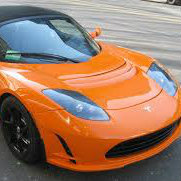
Tesla -- the disruptive electric car company headed by tech luminary Elon Musk -- held a major "Autonomy Day" event for investors this week. At the event, Musk promised Tesla would have Level 5 autonomous driving technology ready by next year -- which he said would allow Tesla owners to essentially rent out their vehicles remotely as taxis.
According to Musk, Tesla owners will be able to earn up to $30,000 a year by renting out their autonomously driven robot taxis (after Tesla takes its 25% to 35% cut of the fare).
However, missing from Musk's Tesla event was any mention of 5G.
"5G doesn't even exist yet, so why is Musk going to talk about it?" explained Strategy Analytics' Roger Lanctot, a longtime automotive analyst with the research and consulting firm. He added that the notion of 5G being necessary for autonomous driving is "a little exaggerated."
Lanctot explained that "Musk is a minimalist if nothing else," and so naturally wouldn't mention any technology that's not core to his offering, whether it's 5G, DSRC (a Wi-Fi-based tech for vehicle-to-vehicle communications) or CV2X (an LTE-based tech for vehicle-to-vehicle communications).
Along those lines, Musk did say that Tesla is dumping Nvidia's computing chips for ones designed by Tesla.
To be clear, many of Musk's promises during Tesla's "Autonomy Day" -- including Level 5 autonomous driving technology by next year -- were met with reactions ranging from skepticism to outright hostility. That's probably because Musk has routinely made similarly outlandish promises in the past, only to back away from them later.
"Half-baked" is how Jeffrey Osborne, an analyst with Wall Street research firm Cowen, described Musk's robo-taxi pledge, according to a Verge article.
"There's just no way that that is going to happen the way it was presented. They’re not even close," Steven Shladover, a retired research engineer at the University of California Berkeley, told Recode.
After all, Level 5 autonomous driving is essentially the most advanced iteration of the technology, where an automobile would be able to navigate around the entire country without a driver at the wheel. Tesla's current cars operate around Level 2, where the car can control steering and speed on a well-marked highway but still requires continuous supervision by a driver.
Nonetheless, the complete absence of 5G from Musk's presentation this week essentially highlights the bubble that the wireless industry is currently living in. Autonomous driving has routinely been discussed as one of the top use cases for 5G, and some in the industry have argued that 5G will be required for Level 5 autonomous driving. The super-fast speeds and low latency supported by 5G will be necessary for instant communications among vehicles inside dense, high-speed freeway traffic, so the argument goes.
Musk, apparently, is having none of that. And that's noteworthy considering Tesla is no stranger to wireless: The company inked a connectivity deal with AT&T four years ago to power the streaming music and infotainment services currently available in the roughly 300,000 Teslas on the road today.
Of course, 5G may well play a role in the autonomous driving industry at some point in the future (groups like the 5G Automotive Association are betting on it). After all, it's still early days in 5G in the US considering initial network coverage can be measured in feet and specifications for 5G-to-vehicle communications haven't even been finalized yet. But it's certainly worth pointing out that, despite all the recent hype around the US being "first to 5G," the technology isn't even part of the "Autonomy Day" discussion with one of the world's most visible automotive innovators.
— Mike Dano, Editorial Director, 5G & Mobile Strategies, Light Reading | @mikeddano
About the Author(s)
You May Also Like




_International_Software_Products.jpeg?width=300&auto=webp&quality=80&disable=upscale)







